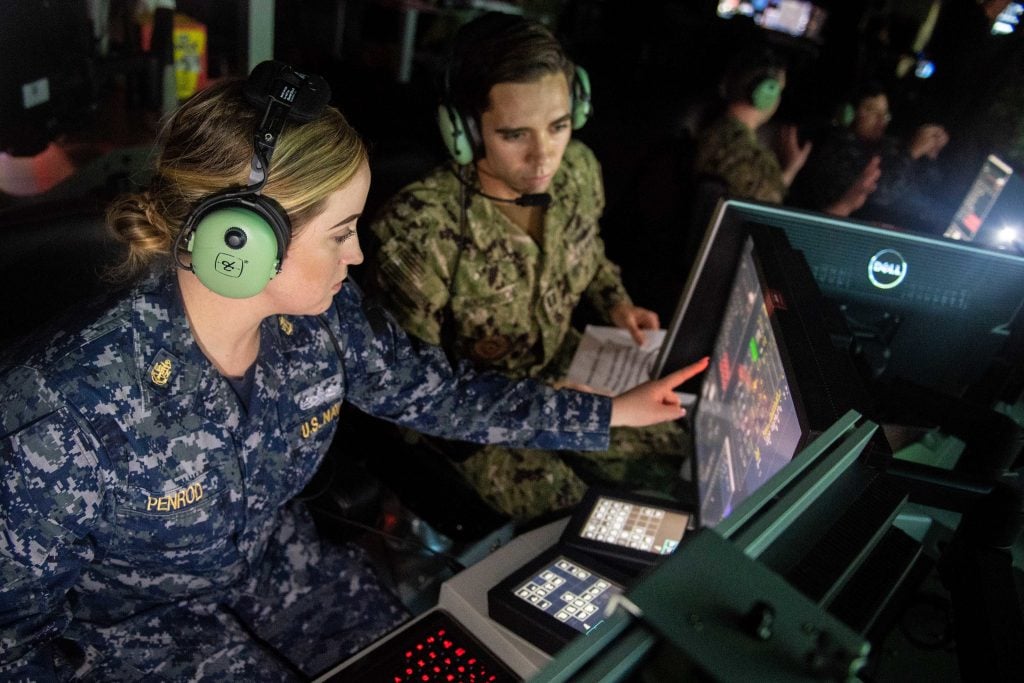 WASHINGTON: The Navy needs to increase both the number and complexity of its wargames, the service’s top admiral said Wednesday, citing rapid advances being made by competitors in cyber and information warfare tactics that will muddy and confuse future battlefields.
WASHINGTON: The Navy needs to increase both the number and complexity of its wargames, the service’s top admiral said Wednesday, citing rapid advances being made by competitors in cyber and information warfare tactics that will muddy and confuse future battlefields.While Adm. John Richardson didn’t provide any details to flesh out his thinking during an appearance at the Atlantic Council, he said “we’re now getting to the point where we’ve got to start in a robust fashion wargaming these elements of conflict…so we understand [how to respond] when we need the authorities to do the things we need to do.”
Richardson’s comments come after the other services have long since moved out on trying to get their cyber and IW houses in order. The Army, Marines, and Air Force have each already talked about their efforts to incorporate Multi-Domain Operations into their wargaming. The idea is to flesh out ways to attack high-tech defenses with coordinated thrusts across all domains — land, air, sea, space, and cyberspace simultaneously. The Navy hasn’t yet signed on to conducting such operations to quite to the same degree, but Richardson’s comments Wednesday may be a signal that the service is getting more serious.
The Army has in many ways been the most enthusiastic about planning for Multi-Domain Operations. It recently created its first unit to consolidate long-range targeting, hacking, jamming, and space under one roof, standing up a battalion-strength Intelligence, Information, Cyber, Electronic Warfare, & Space (I2CEWS) detachment at Fort Lewis, Washington to counter China, while a second will follow in Europe for Russia.
Richardson said that fighting across domains — particularly cyber — will be difficult, as “it all has to come together with nanosecond timing, so getting that all fleshed out is going to be an important part of this learning engine, and the wargaming part of this going forward.”
The admiral also said that the Navy needs to do a better job at rapid prototyping, and moving weapons development along faster than it has in the past.
Taking years to develop new systems is “a self-inflicted wound,” he said, caused by an overabundance of caution and having too many people up and down the chain of command afraid of making mistakes. “We need to get better at this. But this is fundamentally a human resources problem and we need to find those people who are…biased in favor of getting things done rather than biased toward not, and slowing things down.”
He said that the Navy has made some advances in that direction, and pointed to the relatively quick turnaround time he’s planning for the next frigate FFG(X) program.
Richardson added that “we’re moving a family of directed energy weapons forward” while working on ways to “regain range on our missile systems and produce those in decisive numbers.”
Asked about the perpetual Next Big Thing, a rail gun attached to the deck of a ship, Richardson wasn’t quite so confident. The “rail gun is a case study for how innovation maybe shouldn’t happen,” he said. “It’s been around for 15 years, maybe 20. So rapid doesn’t come to mind when you’re talking about time frames like that.” But, he added, “we’re going to continue after this…it’s going somewhere,” but exactly where, he couldn’t say.
